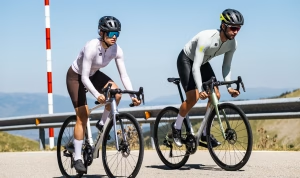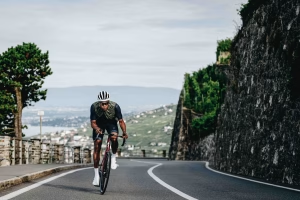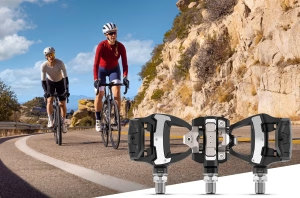Adjusting your saddle height is one of the easiest adjustments to your bike. Finding your optimal saddle height can increase your pedalling efficiency, it improves comfort and, most importantly, helps prevent long-term injuries. It is therefore important to find your optimal saddle height, and there are a number of methods to do this. There are easy ways to find your saddle height, these are described in this article. Should you have recurring pains even after manually determining your saddle height, it might be an idea to look into professional bikefitting.

How do you know your saddle height is wrong?
There are three common methods for finding your ideal saddle height yourself. But how do you know your saddle is at the wrong height? First of all, the wrong saddle height is the source of many knee problems, if you get knee problems during or after cycling, it is likely that you need to change something about the height of your saddle. You have your saddle too high the moment your hips move up and down a lot while cycling. You've probably seen it on someone else you've cycled behind. The hips move in all directions. You can see this when you cycle behind someone. Your saddle is too low if your legs are nowhere near stretching during the revolutions.
Before you start
You currently have as one saddle height. Maybe after changing your saddle height it turns out that you still want to go back to your old saddle height. Stick a piece of insulating tape around your seat post at the height where it enters the frame. If necessary, you can always go back to your old saddle height.
1. Heel/Pedal method
The most common way is the pedal-heel-to-pedal method, and while it doesn't take all factors into account, it will get you close to your ideal saddle height. For the heel-to-pedal method, you will need some acrobatic skills. This is because it involves sitting on your bike standing still. It is easiest if it is in your turbo trainer, but you can also ask to lean on someone or use a wall as support. Place your heel on the pedal and pedal backwards to reach the six o'clock position. Your knee should be completely straight. If your knee is still bent then with your saddle raised slightly. If your heel can no longer make contact with the pedal then your saddle is too high.
2. Inseam (Lemond method)
The heel/pedal method will get you a long way, a slightly more accurate way of measuring is to measure your inseam and multiply it by 0.883. This is also called the Lemond method, because Greg Lemond was the first to use this way of with to determine his saddle height. You measure your inseam by standing against a wall without your shoes on with a book in your hand. Put your legs about 15cm apart and press the book into your crotch with the same pressure you would have on you. So this is not uncomfortable, but you will feel it. Next, measure the distance between the ground and the top of the book. This your inseam. Multiply this number by 0.883 and you have your saddle height measured from the centre of your bottom bracket.
3. 109% method
A variant of the above method is the 109% method. Here you measure inseam, but multiply this number by 1.09. The number that comes out is the distance between the pedal and the saddle.
Conclusion
Note: People tend to set the saddle higher in spring or winter, as this is when a lot of endurance training is done with the hands on the handlebars. In summer, you can then run into problems the moment you cycle more in the stirrups. So the trick is to find a saddle height that suits you all year round and for every training session or race.
Want to make sure you're on a perfect bike? Then check out dynamic bikefitting. During a dynamic bikefitting, you will be put on your bike properly in one go! Wondering what a bikefitting is? Then read our article with all about a bikefitting.





